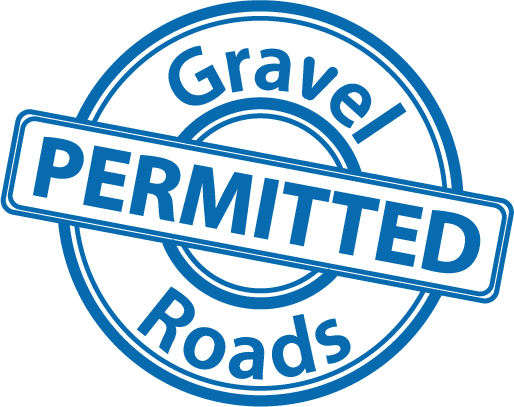First Time Campers
What to bring
Your RV will be ready for you to hit the road! Check out our convenience kits to see what is already included in your rental. All you need to bring are clothing, medications, special personal items you like to have with you while traveling.
Since you may leave the RV for day tours, make sure you have a day pack with you. For roundtrip rentals you may move your clothing and items into the RV upon pick up and leave your suitcase with the rental station until your return. For one-way rentals we recommend you bring your belongings in duffel bags, as they can easily be stored in a truck camper or motorhome.
Routing
Enjoy the flexibility of your home on wheels! With changing weather and breathtaking landscapes, you can adjust your route on the go – start in reverse, extend your stay in a favorite spot, or skip a planned stop. Since you are not tied to a fixed overnight location, you will likely travel at a slower, more immersive pace.
Check out our self-drive tour suggestions for inspiration. Keep in mind that with an RV, you’ll want to add at least 30% more time than standard self-drive itineraries to truly enjoy the journey. Take your time, explore freely, and soak in the beauty of Alaska!
Campgrounds
The Milepost is a great resource for finding campgrounds.
Here is what you need to know about different camping options:
Private Campgrounds
- Offer full hookups (electric, water, sewer) and more amenities
- Located near cities and villages
- Many allow online reservations
- Prices range up to $90 per night for prime locations with full services
Public Campgrounds (Scenic & Budget-Friendly)
- Forest Service, BLM (Bureau of Land Management), and Alaska State Park Campgrounds offer basic facilities
- Expect toilets but no water or electricity at most locations
- Reservation Sites:
- Recreation.gov – Forest Service campgrounds
- ReserveAmerica.com – Most Alaska State Park campgrounds
- BLM campgrounds are walk-in only (first-come, first-served); rates are typically $20 – $30 per night
Camping Tips for Alaska
- Alternate between basic scenic campgrounds (1-3 nights) and full-hookup RV parks to recharge
- Many Chevron gas stations offer free dump stations and water fill-ups
- Remote campgrounds use self-check-in (bring cash, no credit card payments)
- Boondocking & Roadside Camping:
- Pull-outs along roads are often great for overnight stays
- Truck campers with 4WD & high clearance have more flexibility on forest roads
- Motorhomes should stick to paved or well-maintained gravel roads
Explore Our Favorite Campgrounds
Check out our curated campground map featuring our favorite spots along Alaska’s main highways. Click on a location for details and links.
For even more campsite options, The Milepost remains the ultimate guide for RV travelers in Alaska and the Yukon.
Travel resources
For additional support in planning your journey, be sure to check out these valuable travel resources.
The Milepost is an extensive guide book covering Alaska, the Yukon, the Northwest Territories, and British Columbia.
Bells Travel Guides offers detailed insights into must-see destinations, lodging, and services.
RV Alaska and RV Yukon provide essential information on campgrounds, routes, and travel tips to help you navigate the road with confidence.
These resources will ensure a smooth and well-informed adventure!
Driving an RV
You will love exploring Alaska and the Yukon with your own home on wheels. Road lanes in Alaska are wide and so are parking spaces, oftentimes you will find designated parking fields for Motorhomes. And to be honest – once you leave Anchorage there is not too much traffic.
But you should always be prepared for road users of a different kind – such as a moose that steps out of the bushes onto the road.
Truck Campers are easy to navigate and fit almost everywhere. With the high clearance and 4WD if necessary, they are perfect for Gravel roads. Motorhomes on the other hand are recommended on paved roads.
Firewood
In Alaska firewood is for sale at supermarkets, gas stations, basic campgrounds and oftentimes on private properties along the roads.
At Government of Yukon campgrounds firewood is free for campers.
Use existing fire pits, keep campfires small and thoroughly extinguish unattended fires.
Always check if there’s a fire ban in place for the area you are in before you light the fire.
And don’t forget to rent an axe with your vehicle!
Supermarkets – Grocery stores
Please keep in mind that you should do your shopping in the larger towns, as there are no or very limited shopping facilities in the small villages or around secluded accommodations.
Well known Supermarkets at bigger locations are for example: Fred Meyers or Carrs/Safeway. In smaller communities you might find “Three Bears” or even a local favorite.
Also, don’t forget to check out the local farmers’ markets to get fresh vegetables and fruits.
Gas stations
In Alaska, all gas stations are self-service. Almost all require the zip code for your credit card to be entered, which only works with American cards. With all foreign credit cards you need to bring the card to the cashier, let them know up to what amount you like to be authorized to fill up, and usually leave the card with the cashier while filling your tank. You then go back to the cashier who at this point will make the final charge to your card (they may or may not put a hold on the card for the amount authorized when you bring the card in initially).
In the Yukon, ssome gas stations are self-service, while others have an attendant to pump gas for you.


